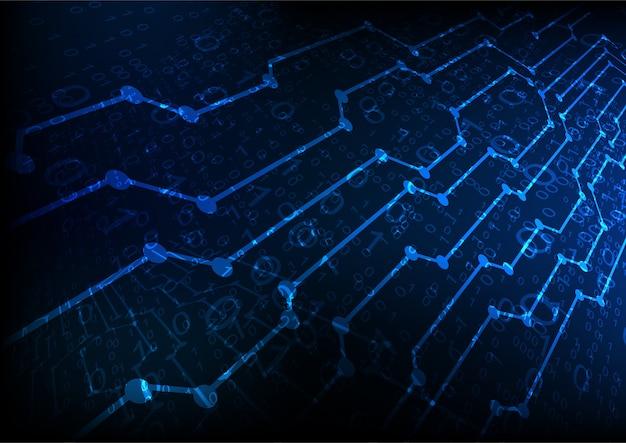Have you ever wondered how communication happens? How a simple collection of words on a page or screen can convey meaning and evoke emotions? Well, that’s where encoding and decoding come into play. Encoding and decoding are fundamental processes in communication that allow us to share ideas, thoughts, and information.
In a nutshell, encoding is the act of converting information into a form that can be easily transmitted and understood by others. It involves encoding thoughts and ideas into symbols, such as words, gestures, or even facial expressions. On the other hand, decoding is the process of interpreting and making sense of the encoded information. It involves deciphering the symbols or signals and extracting the intended meaning.
To better understand encoding and decoding, let’s imagine a scenario. Imagine you’re sending a text message to a friend. As you type your message, you’re encoding your thoughts into written words. Once your friend receives the message, they decode the words to understand the message’s meaning. Encoding and decoding happen seamlessly and rapidly in most forms of communication, allowing us to interact with the world around us.
Understanding the concepts of encoding and decoding is essential not only for effective communication but also for teaching and learning. So, let’s dive deeper into why encoding is relevant for communication, how decoding plays a vital role, and explore some examples to illustrate these concepts more clearly.
Now, let’s explore why encoding is relevant for communication, how decoding is crucial, and delve into examples that help illustrate these concepts.

What is Encoding and Decoding with Example?
In the world of technology and computer science, encoding and decoding are like a secret language that allows computers to communicate with each other. It’s as if they’re using their own version of Pig Latin. But fear not, my friends, for I am here to demystify this enigmatic duo and give you the lowdown on what encoding and decoding are all about.
Encoding: Cracking the Code
Imagine you have a secret message that you want to send to your friend, but you don’t want anyone else to understand it. What do you do? You encode it, of course! Encoding is like putting your message through a digital blender and transforming it into a format that can be transmitted or stored in a more secure and efficient manner.
Let’s say you want to encode the message “HELLO.” One common encoding method is ASCII (American Standard Code for Information Interchange). In ASCII, each character is assigned a unique number called a “code point.” For example, the code point for the letter ‘H’ is 72, ‘E’ is 69, ‘L’ is 76, and ‘O’ is 79.
So, to encode “HELLO” using ASCII, you would convert each character into its corresponding code point. Your encoded message would look like this: “72 69 76 76 79.” Voila! Your message is now disguised and ready to be sent without prying eyes deciphering its contents.
Decoding: Cracking the Codebreaker
Now that you’ve encoded your message, your friend receives it and wonders what in the world you’re trying to say. Fear not, dear friend, for decoding is here to save the day! Decoding is the process of unraveling an encoded message and transforming it back into its original form.
To decode our “72 69 76 76 79” message, we simply reverse the encoding process. We take each code point and convert it back into its corresponding character. And just like magic, we get back our original message: “HELLO.”
Example: The Case of the Sneaky Spy
To illustrate encoding and decoding in action, let’s embark on a thrilling journey into the world of espionage. Imagine you’re a secret agent tasked with sending a top-secret message to your fellow agent, Agent X. You can’t risk anyone intercepting the message, so encoding is crucial.
You decide to use Base64 encoding, a popular method that converts any type of binary data into a string of ASCII characters. You take your message, “Mission: Top Secret,” and encode it with Base64. The encoded message now looks like this: “TWlzc2lvbjogVG9wIFNlY3JldA==”
You transmit the encoded message to Agent X, who receives it on his trusty gadget. But Agent X can’t make sense of the gibberish. Luckily, he knows exactly what to do. He decodes the message using the same Base64 algorithm, and just like that, the original message is revealed: “Mission: Top Secret.”
And so, another successful mission concludes, thanks to the power of encoding and decoding.
Encoding and decoding may seem like complicated and mysterious processes, but they are the backbone of secure and efficient communication in the digital realm. By encoding your messages, you can protect sensitive information and ensure that only the intended recipient can decipher them. And with the power of decoding, you can transform encoded messages back into their original form, like a digital Sherlock Holmes solving a codebreaker’s puzzle.
So, the next time you encounter encoding and decoding in your technological journeys, remember the power they hold and the secrets they safeguard. And always stay one step ahead in the grand game of ones and zeros.

FAQ: What is Encoding and Decoding?
Why is encoding important for communication
Encoding plays a vital role in communication as it allows information to be converted into a format that can be transmitted, stored, and interpreted by both human beings and machines. Whether it’s text, audio, or video, encoding ensures the efficient transfer of data across various channels. Without encoding, our messages would be nothing more than a mishmash of unintelligible gibberish!
How do you engage struggling readers
Engaging struggling readers can be a challenge, but fear not! Here are a few handy tips to bring the joy back to reading:
-
Make it relevant: Find books and materials that align with their interests, whether it’s superheroes, animals, or cooking. Engaging content is the key to unlocking their reading potential.
-
Set achievable goals: Break down reading into manageable chunks, celebrating every milestone along the way. Small victories lead to big wins!
-
Create a comfortable environment: Find a cozy nook, gather some pillows, and create a reading sanctuary. A comfortable space enhances the reading experience and makes it more enjoyable.
How do you teach a struggling reader
Teaching a struggling reader requires patience, creativity, and a sprinkle of magic! Here are some strategies that can help:
-
Individualized instruction: Identify the specific areas where they struggle, such as decoding, comprehension, or phonics. Tailor your teaching techniques to address their unique needs.
-
Multisensory approach: Engage multiple senses by incorporating visual aids, hands-on activities, and auditory elements. The more senses involved, the better the chances of comprehension.
-
Provide explicit instruction: Break down reading skills into clear, step-by-step processes. Use visual cues, repetition, and mnemonic devices to reinforce learning.
What is Decoding Skill 1
Decoding Skill 1 is the fundamental ability to translate written symbols into meaningful language. It involves recognizing and associating individual letters or groups of letters (graphemes) with their corresponding sounds (phonemes). This crucial decoding skill forms the foundation for reading fluency and comprehension.
What is encoding and decoding in the communication process
In the communication process, encoding and decoding go hand in hand like a dynamic duo. Encoding refers to transforming information into a code or format suitable for communication. Think of it as a secret language between the sender and receiver. On the other hand, decoding is the process of unraveling that code and making sense of the message. It’s like cracking a secret code to reveal the hidden treasure within!
What is encoding and decoding with an example
Let’s dive into a real-world example to unravel the magic of encoding and decoding. Imagine you want to send your friend a hilarious joke via text message. Here’s how the process unfolds:
-
Encoding: You transform the joke into a series of letters, numbers, and symbols using your phone’s keyboard. The message is now converted into a code that can be transmitted.
-
Transmission: The encoded message, like a virtual carrier pigeon, travels through the airwaves to your friend’s device.
-
Decoding: Your friend’s phone receives the message and decodes the encoded text, revealing the joke in all its hilarious glory.
Voila! Thanks to encoding and decoding, your friend bursts into laughter, and the magic of communication works its wonders.
Why is decoding important
Decoding is like having a superpower in the reading realm. It enables readers to decipher written words, sentences, and texts, opening the doors to knowledge, imagination, and endless adventures. Without decoding skills, the written word would remain an enigma, leaving us unable to unlock the vast treasures that lie within books, articles, and online content.
What do you mean by decoding
Decoding is simply the process of translating written symbols, such as letters and words, into meaningful language or speech. It allows us to transform the scribbles on a page into understandable words, sentences, and ideas. Like a secret language waiting to be unraveled, decoding grants us access to the vast world of written communication and comprehension. So go forth, intrepid reader, and decode fearlessly!
